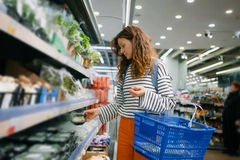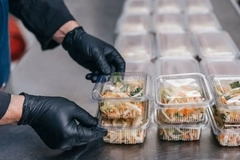McDonald’s Taiwan removes paper boxes and plastic lamination in resource conservation push

McDonald’s Taiwan has eliminated plastic lamination and paper boxes for select menu items, transitioning to eco-friendly paper wraps and bags to reduce waste and minimize plastic use.
Popular items such as the Big Mac, Chicken McNuggets, Filet-O-Fish, and Apple Pie are now served in paper packaging instead of cardboard boxes. The move follows McDonald’s Taiwan’s switch to fluoride-free greaseproof paper for all its packaging bags.
“Replacing paper boxes with paper wraps is estimated to help conserve approximately 10,000 trees annually, while eliminating plastic lamination is projected to reduce plastic usage by 86 tons each year,” says McDonald’s Taiwan.
Waste and plastic reduction
 McDonald’s Taiwan transformed its standard box packaging into safe and customer-friendly wraps.The company shares that each product requires customized packaging solutions such as adjusted paper size, thickness, materials, and folding methods. For instance, the steamed bun of the Filet-O-Fish necessitates breathable, oil-resistant wrapping — similar to baking paper — to prevent sogginess and stickiness.
McDonald’s Taiwan transformed its standard box packaging into safe and customer-friendly wraps.The company shares that each product requires customized packaging solutions such as adjusted paper size, thickness, materials, and folding methods. For instance, the steamed bun of the Filet-O-Fish necessitates breathable, oil-resistant wrapping — similar to baking paper — to prevent sogginess and stickiness.
McDonald’s Taiwan gained experience from McDonald’s France and Korea in redesigning the packaging for Big Mac. After completing trials and multiple design iterations, the company finalized a wrap that is said to maintain the burger’s “iconic” presentation while ensuring ease for staff and customers.
The company is replacing all plastic lamination in packaging papers with natural starch or silicon-based alternatives. According to McDonald’s Taiwan, the new packaging maintains the necessary grease resistance and breathability without compromising recyclability. Efforts also include adjusting ink ingredients and refining printing designs.
In addition, over 200 McDonald’s restaurants on the island have introduced reusable cups for dine-in customers. Made from PP, these BPA- and plasticizer-free cups withstand temperatures from negative five to 110 degrees Celsius. After use, each cup is visually inspected, manually rinsed, and machine-washed at 80–85 degrees Celsius with food-safe detergents to ensure hygiene.











